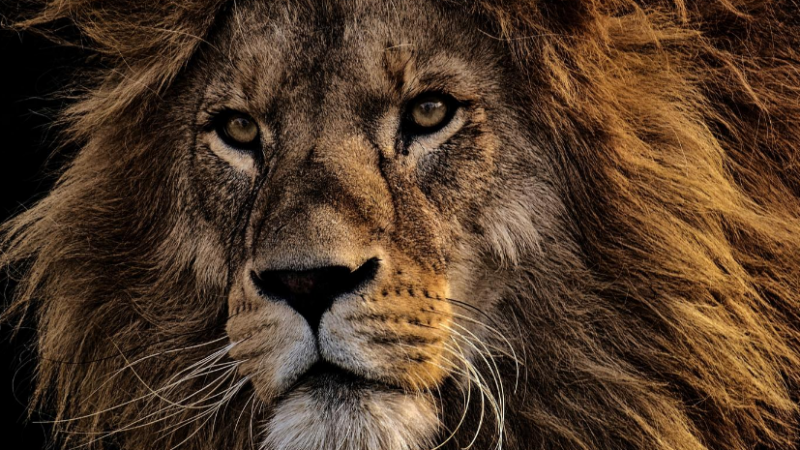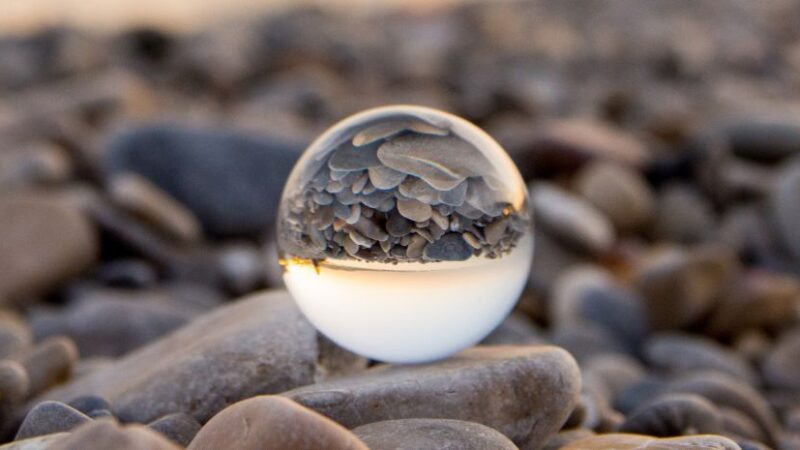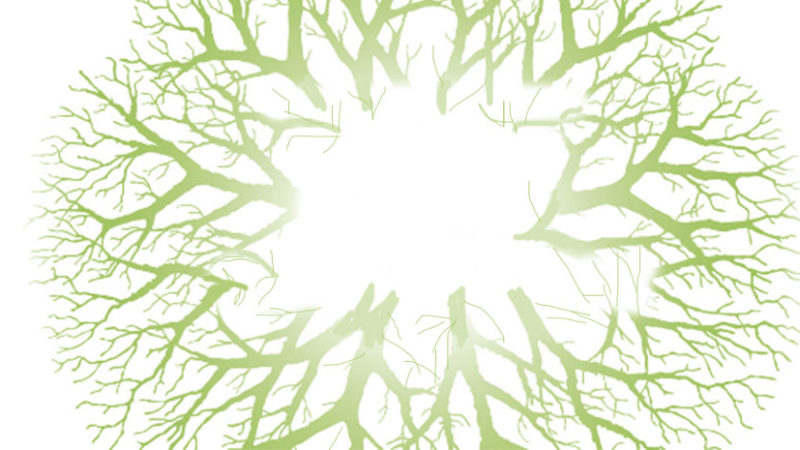5 Types of Imbalance: A Guide to Illness from a Shamanic Perspective
Shamanism views illness as an energetic imbalance of some sort—either something is there that shouldn’t be, or something should be there that isn’t.
What Does It Mean? A 4-Step Guide for Understanding Your Animal Spirit Allies
How often have you had an unusual encounter with an animal and immediately wondered, “What does it mean?”
Perhaps you saw an owl in daylight. Or you kept noticing images of elephants everywhere. Or maybe a huge spider appeared right in front of you on the sidewalk.
If you’re like many shamanically-inclined folks, the first thing you’ll want to do in these situations is google what that animal “means”.
I understand the temptation, but please—hold off!
The universe and spirit have many ways of communicating with us, including animal messengers. And the universe does not play by a set of pre-existing rules. The messages each animal carries will be unique to you, and no book or website can tell you the full meaning of your encounter.
The same is true of power animals—spiritual helpers in animal form who share their gifts and medicine with us. While a bit of research can certainly be helpful, if you dive right in to other people’s interpretations, you’ll be more likely to miss important elements of your personal relationship with your power animal.
Animal messenger or “normal animal doing normal things”?
I can hear it now . . . Sometimes a bird is just a bird. It doesn’t have to mean anything.
That’s true. Not everything has to mean something.
But I have to be honest—one of my biggest pet peeves in spiritual communities is dismissing others’ experiences in this way.
Because the truth is, the universe is always communicating with us. Who are you to say what does or doesn’t have meaning for another person?
The great advaita scholar Richard Miller, PhD, once spoke to this in a training while teaching us about the art of welcoming. As he explained, it’s too exhausting to keep trying to figure out which parts of life are trying to tell us something and which parts are so-called “normal life”, so he has the practice of “welcoming everything as a messenger”.
This practice of welcoming is a beautiful way to fall deeper into relationship with all of life. Every sensation, emotion, encounter, or insight can provide an opportunity to open to and learn from spirit.
If this sounds overwhelming, not to worry. This doesn’t mean you need to go through life looking at every little thing as a symbol to decipher or every animal as a messenger bearing life-altering news. Instead, it means that spiritual guidance is always available to us. To access this wisdom:
- Relax. You don’t need to overwhelm yourself by seeing every little thing that happens as a critical message. You will notice what you need to notice.
- If something does catch your attention, even if it’s something very common and “normal”, trust your intuition and recognize that you are noticing it for a reason.
- You can also set an intention to receive a message from a spirit via the natural world. Bring your awareness into your heart, send your request to spirit, and then open your awareness, letting your attention wander and draw you to your answers.
- Finally, once something does call your awareness, use the process outlined below to discover the meaning and messages it holds for you.
When to Pay Attention
Many teachers share that for an animal to actually mean something, rather than be a simple sighting, it must show itself to you four times. For example, let’s say you see a hawk on a walk, then on TV, then hear the word “hawk” in a conversation, and then find a hawk feather.
Still others will note that if an animal is behaving in an unusual way, it could very well carry a message for you.
If either of these happen, definitely pay attention.
And if you only see a normal animal doing normal things, but feel that there is a message for you, trust that too.
Maybe the Message is Love
Sometimes when our attention is drawn to something in nature—a beautiful flower, an animal sighting, or an unusual cloud—we’re receiving a blessing. In this case, you don’t necessarily need to go through the process below. Simply receive your hello from spirit and know that the “message” is love.
Your 4-Step Guide
So, when you encounter an animal—whether a messenger in nature or an actual power animal—what are you to do? How do you figure out what the message is? How do you know what gifts your power animal carries?
Here’s the process I recommend for understanding your animal messengers and power animals. This is based on years of working with my own animal spirit guides and those of my clients.
Step 1
Journey to the spirit of the animal and ask them to teach you about themselves and your relationship. (If you don’t have a journey practice, Sandra Ingerman’s course, Experiencing the Shamanic Journey, offers a wonderful introduction to the practice.)
If the animal in question is one you’ve encountered in ordinary reality, you might like to ask:
- Are you here to share a message with me, or are you appearing to bring my awareness to a new power animal relationship? Or both?
- What is the message you bring me?
If you’ve received a power animal, whether from a power animal retrieval or another means, you might like to explore some or all of the following questions:
- What medicine do you carry?
- What gifts would you like to share with me?
- How may I carry your medicine?
- What areas of life can you help me with?
- Why are you appearing in my life now?
- Are you a new power animal, or have you been with me for sometime?
- May I have an attunement to your energy?
- What name may I call you by?
- How may I nurture our relationship?
Step 2
After you’ve done your journey or meditation, think about any pre-existing ideas or knowledge you already have about this animal. This process can provide many clues as to how the animal will support you.
Ask yourself:
- What is my immediate reaction to this animal? Am I excited, fearful, surprised?
- What symbology or associations do I think of first?
- Are there any stories or myths that come to mind?
- What character traits do I personally connect with this animal?
Then, reflect on what your answers might mean for either a message or the unique gifts a power animal might share with you.
Step 3
Once you’ve finished this personal exploration, it’s time to learn more about your animal in ordinary reality. Try to find out:
-
- What do they eat?
- Where do they live?
- What is their social nature? Family dynamics?
- What unique features stand out about this animal?
- When are they most active? Quietest?
- What are their biggest threats?
- What do you find most fascinating about this animal?
Ask yourself how the following information might help you understand either the message or your power animal’s gifts.
Step 4
Finally, go ahead and look up existing ideas about your power animal might mean. Even though we don’t want to fill our minds with other people’s and cultures’ ideas first, this information can be helpful.
As you explore, pay attention to a few things:
- What feels right and relevant? Where do you get an immediate hit or “ah-ha” moment?
- What doesn’t feel right or relevant? Not everything you read will relate your personal relationship.
- Does the animal have any particular meanings within your own ancestry? What about within other cultures you feel especially connected to?*
*Make sure to explore a variety of cultural mythologies at this stage, as each might have quite different interpretations of your animal. For example: In North America, many indegenous tribes associate the owl with death. Yet in Greek and Roman mythology, the owl was a bearer of wisdom. Though in China the owl was viewed as an ominous creature, the Japanese considered the owl to be a sign of good fortune.
At this stage, I’ll encourage you to avoid the spirit guide websites out there—in my experience, many of them seem to exist just for profit and do not have the depth of meaning you can find in a book, such as Ted Andrew’s Animal Speak, Jamie Sam’s Medicine Cards, or Sounds True’s own The Book of Beasties by Sarah Seidelman. If you’re looking online, visiting sites that detail mythological or symbolic associations from more academic perspectives can be useful.
Receiving messages from spirit through the natural world is a gift that has been bestowed on humanity since the beginning of our species on this planet. Be gentle with yourself as you learn to read the signs and deepen your relationship with the natural world. It is your birthright.
And, while the steps outlined here can initiate your journey into understanding your power animal, getting to know your power animal and its gifts is a lifelong journey. Revisit each of these steps often, and make sure to nurture your relationship with your power animal just as you would with a beloved friend.
If you’d like help discovering who your power animal is, be sure to check out Sandra Ingerman’s 6-week course, Experiencing the Shamanic Journey, which begins on September 8, 2020.
In this course, you’ll learn how to take a shamanic journey and meet one of your power animals!
You can learn more about this wonderful course with Sandra here.
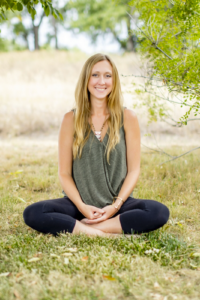 Juniper Stokes is an intuitive healer and spiritual teacher. She helps others activate and tune into their own intuition, healing abilities, and connection with spirit through private sessions, classes, and workshops. (And yes, this includes Power Animal Readings.) In touch with the spirit realms from a young age, Juniper has trained in wide variety of healing traditions, including Sandra Ingerman’s Two Year Shamanic Teacher Training program and Samahita’s Pranayama Teacher Training, to name a few. Juniper also writes behind the scenes at Sounds True and regularly leads guided shamanic journeys for Sounds True’s Shamanic Path Facebook page, which currently has nearly 30k members. In addition to her spiritual teaching and healing, Juniper is a clinical aromatherapist, herbalist, and flower essence practitioner. Her healing products, including a line of spiritually-infused botanical perfumes, will soon be available in the Alchemessence Apothecary.
Juniper Stokes is an intuitive healer and spiritual teacher. She helps others activate and tune into their own intuition, healing abilities, and connection with spirit through private sessions, classes, and workshops. (And yes, this includes Power Animal Readings.) In touch with the spirit realms from a young age, Juniper has trained in wide variety of healing traditions, including Sandra Ingerman’s Two Year Shamanic Teacher Training program and Samahita’s Pranayama Teacher Training, to name a few. Juniper also writes behind the scenes at Sounds True and regularly leads guided shamanic journeys for Sounds True’s Shamanic Path Facebook page, which currently has nearly 30k members. In addition to her spiritual teaching and healing, Juniper is a clinical aromatherapist, herbalist, and flower essence practitioner. Her healing products, including a line of spiritually-infused botanical perfumes, will soon be available in the Alchemessence Apothecary.
The Hobo Code (for Spiritual Pilgrims)
Right behind the Sounds True office backyard, just a hop over tangled barbed wire, run these local railroad tracks:
The other day I was watching television’s most underrated exploration of the Jungian “shadow principle”—Mad Men—and it reminded me of these tracks. In the episode called “The Hobo Code,” we get a glimpse into the protagonist Don Draper’s childhood during the Great Depression. And we learn about a secret vocabulary that was chalked and carved on fence posts and telephone poles across America.
As it turns out, the hobo code was real. It varied from region to region and across the years. Countless souls used it to help each other find food and shelter and to avoid the perils of the day.
Here are some of those hobo signs (scraped from cyberspace) that still feel relevant to me, if only metaphorically:

I spotted one of my first “hobo marks” decades ago. It came as a crackling transmission of Roy Tuckman’s legendary Pacifica Radio show “Something’s Happening.” I was homeless, hopeless, and definitely “hobo” at the time, couchsurfing in a friend’s farmhouse in Carmel, California.
The clock radio clicked to 2:00am and, drifting in and out of the night static, was the voice of Alan Watts. He was chuckling at the folly of “trying to catch an ocean wave in a bucket.” Which is exactly what I was doing with my life at that time—trying to rack up achievements and experiences that would assure my permanent, foolproof success.
Um, yeah, right.
Alan’s “hobo mark” pointed me onto the boxcar of radical self-inquiry, though I didn’t realize it until years later. And ever since, I’ve shared his humor and wisdom whenever it’s felt right to.
In fact, I had the privilege of working with Alan Watts’ son, Mark, to hand-pick the sessions for the audio set Out of Your Mind. Alan’s “catching waves in a bucket” allegory is in there.
Is the spiritual path so different from those rolling train tracks? Maybe the markers we find on our own journey—a haiku by Ikkyu, a meaningful photograph, the advice of a friend—reflect the same pilgrim’s spirit that says “we’re all in this together brothers and sisters.”
If I ever go back to visit Victoria’s family farm, I think I’m gonna chalk this symbol on their fencepost:

So, what was your first metaphorical “hobo sign” on your life’s journey?
The Tantric Consort: Awakening Through Relationship
Friends, I wanted to let you know about a four-part online video course that we created with Reggie Ray which explores intimacy as one of the most radical vehicles of spiritual transformation. The Vajrayana, or tantric tradition of Buddhism, teaches ways of being in relationship that serve as unique gateways to spiritual awakening. These teachings on the consort represent some of the most advanced teachings in Buddhism, and have been guarded and kept secret for the most part over the last 1000 years. What Reggie has discovered is that contemporary practitioners are uniquely situated to undertake some of their deepest spiritual work in the context of intimate relationship, however lack the perspective and practices needed to do so.
Watch Reggie’s video introduction here:
Learn more and access The Tantric Consort online course here.
Who Is the Tantric Consort?
The tantric tradition asserts that spirituality in its fullest sense cannot be an isolated, solitary, purely self-involved enterprise. Rather, we make the deepest journey of transformation and ultimate fulfillment only in relationship—with our deepest nature, with our unique karmic situations, with the people in our lives, and with the living universe around us. Through being in connection with these others, we are inspired, we love, and we open. We learn at the deepest levels that we are never one alone but always two-by-two, always in connection, always in the love relationship with all that is; and therein lies our life and our realization.
The tantric consort is the ultimate other. In fact, in the tantric tradition, it is said that moment by moment, he or she represents to us the entire phenomenal world. In other words, in the consort, we most deeply and completely meet the sacred universe in its entirety—a perhaps outrageous claim, but one that experience proves. Through the practice of taking the consort as representing the sacred totality, we learn to love more deeply than we ever imagined possible: first the consort, then everything that is. We see where we habitually hold back and hide out; we practice ways to release our masks, blockages, and obstacles; and ultimately we find union, where releasing our narcissistic fixation on ourselves and discovering our profound and eternal oneness with the consort—and through him or her the world—are the same thing. Ultimately, our ability to journey on the path of the tantric consort comes down to our own willingness, bravery, and devotion in cultivating an open heart and in learning to love the beloved openly and without limit.
By sharing ancient Vajrayana teachings on the view of the consort relationship as well as guiding us through specific, powerful meditations, Reggie leads us to both an understanding and an experience of the tantric consort as the gateway to our own awakening. He emphasizes learning practices that can be carried forward into our lives, including several heart-based meditations to be practices on our own or with a partner.
Many believe that the goal of spiritual practice is enlightenment or liberation, but the human being actually longs for much, much more. Instinctually, we yearn for what we know is possible: fulfillment, joy and union with all creation. Opening to our longing to connect with the tantric consort is the gateway and learning to relate with him or her openheartedly is the path.
Here is a summary of the course’s four parts:
Session 1: Relating with the Other as Sacred
The Vajrayana View of Consort Practice
Why is relationality the essence of Vajrayana spirituality? What special role does the consort play within the Vajrayana? Where do these teachings come from and how can the ancient practices of working with a consort be applied to our modern lives? What differentiates the consort relationship from conventional relationships? How does the consort appear in our life?
The guided meditation we will learn in Session One is The Thousand-Petaled Lotus Practice: Beginning to Open the Heart. Just as we establish the view on a conceptual level in order to engage in consort practice, we must also establish the ground of an open heart on a visceral level. The Thousand-Petaled Lotus Practice will become a gateway to all further consort practice for us.
Session 2: Genuine Presence
The Practice of Being a Consort
In Session Two we will discuss the qualities of a consort relationship—as well as each partner’s individual practice—that create a powerful container for spiritual transformation. Themes will include: staying close to your inspiration, becoming vulnerable, the nature of commitment in the consort relationship, courageous honesty, and relaxing the judgmental mind.
The commitment of tantric consorts to work with one another’s fullness—the brilliant array of light and dark, wisdom and neurosis, empowerment and injury that we each possess—becomes an invitation for consorts to explore their own vastness and become who they truly are.
We will also learn a meditation called Dissolving Blockages and Uncovering the Heart’s Unconditional Openness. Through our persistent, gentle practice we begin to wear away the armor that surrounds our hearts, revealing a luminous love that naturally opens to and receives our partner.
Session 3: Obstacles and Antidotes
Practices and Techniques for When the Going Gets Rough
In the consort relationship we are bound to encounter even more emotional and psychological “triggers” than in a conventional relationship, because we have explicitly committed to spiritual awakening, which requires that we go to and through the uncomfortable places; that we surf the endless waves of our own growth edges.
When those unavoidable experiences arise, how can we learn to welcome them with open arms, rather than to cower and escape into habitual behavior patterns? Session Three’s discussion will be on cultivating our bravery as spiritual warriors so we can engage these encounters differently than we have in the past.
In this session Dr. Ray will lead us through a meditation that applies especially well to moments of upheaval in relationship: Learning to Behold Our Intimate Partner with Our Heart.
Session 4: Meditation in Action
Healing Core Traumas with the Consort
It is said in the tradition that the consort “unbinds the fetters of the heart,” meaning that he or she frees us at the deepest levels of our being to love and to open that love to the world. Through consort practices, over time, the most hidden, unconscious blockages are called into consciousness so that we can see them, work with them, and resolve them. Often the emotional twists and distortions that underlie our current conscious ego prison go back to preverbal levels. Yet, as modern psychology shows us, these unconscious patterns control and limit what we can feel and see and experience, and ultimately block our ability to love fully.
This session will discuss the path of consort practice in its ability to heal and resolve our deepest wounds. Facing these traumas with the support of our tantric consort is a slow but liberating process that opens up our own capacity to experience life’s joy and fulfillment.
This session’s final guided meditation is a powerful one that can be practiced on one’s own or with a partner: A Consort Meditation for Dissolving Core Traumas and Obscurations. Dr. Ray will lead us through this meditation technique that can be applied again and again, either when core traumas arise naturally, or when we sit down with the intention of specifically engaging certain aspects of ourselves or our partner that we know need healing.
Turn your understanding of meditation inside out and upside down
Meditation has found a home in the West. Countless scientific studies tout its benefits, and a multitude of students proclaim its life-changing value. I am one of those students. For over forty-five years I have practiced this ancient art, and I continue to reap its remarkable rewards. While I remain a follower of many wisdom traditions, and believe that no one has a patent on truth, thirty years ago I took refuge in Buddhism. The adage “Chase two rabbits; catch none” points out the necessity of commitment, and the dangers of spreading yourself too thin.
My passion for meditation led me into the traditional Tibetan three-year retreat, where I became a monk with robes and a shaved head, meditating fourteen hours a day in a remote monastery. I even slept sitting up in meditation posture, practicing the nocturnal meditations of dream and sleep yoga. Three-year retreat is like a meditation university, providing the opportunity to practice dozens of meditations in the most nurturing environment. It remains the most transformative experience of my life.
Of the many practices I was introduced to in retreat, one meditation stands out: the quirky, intense, multifaceted, and revolutionary practice of reverse meditation. I learned these practices within the context of Mahāmudrā (Sanskrit for “great seal”), a lofty tradition in Tibetan Buddhism that explores the nature of the mind. This was over twenty years ago, and since then these radical meditations have become a cornerstone of my spiritual path.
They’re called “reverse” meditation for a number of reasons. First, these practices are the opposite, or reverse, of what many of us associate with meditation. Most people think that meditation is about feeling good, getting “Zen,” or otherwise chilling out. But this is just one small aspect of meditation. Complete meditation is not about feeling good—it’s about getting real. And getting real requires dealing with the reality of difficult situations.
Second, these unique meditations are designed to reverse our relationship to unwanted experiences, which means going directly into them instead of avoiding them. In so doing we can discover the basic goodness of whatever arises, which is deeper than interpretative goodness. Basic goodness refers to the ineffable “suchness, isness, thatness” of whatever occurs—good or bad.
If we capitulate to our usual avoidance strategies, we push the acute, conscious psychological discomfort of avoidance into becoming a chronic, unconscious mental cramp. The discomfort is still there, but now it’s buried deep in our body-mind matrix, where it works backstage to dictate much of our onstage life. The rejected experience then manifests symptomatically—it becomes an undiagnosed reflection of an underlying discord that expresses itself in virtually everything we do. Our actions then become evasion tactics—reactivity, psychological duress, physical illness, and all manner of unskillful responses to the challenges of life—as we try to skirt these buried, uncomfortable feelings.
The reverse meditations give us the opportunity to relate to our mind instead of from it—and also to establish a relationship to our evasion tactics, which otherwise become obstacles that act like scar tissue to sequester the unwanted experience from consciousness. Relating from our mind, from our reactivity, is no relationship at all. In place of conscious relationship, we respond with knee-jerk reflexes to difficult experience, a reactivity that kicks us out of our feeling body and into our thinking head, and into unnecessary suffering. Instead of dealing authentically with the challenging somatic sensation, we leap into inauthentic conceptual proliferation (confabulating and catastrophizing) to buffer ourselves from the discomfort of our feelings. We run from the honest pain and real news that come with being human, and into dishonest commentary and fake news. The truth is that many of the worst things in our life are things that never really “happened”!
Third, the reverse meditations upend our sense of meditation altogether. They represent a revolution in spiritual practice that turns our understanding of meditation inside out and upside down, and therefore radically expand our practice. Situations that were once antithetical to meditation now become our meditation. Obstacles that previously obstructed our spiritual path now become our path. This means that everything becomes our meditation. Nothing is forbidden. We can enter lifetime retreat in the midst of ordinary life.
Excerpted from Reverse Meditation: How to Use Your Pain and Most Difficult Emotions as the Doorway to Inner Freedom by Andrew Holecek.
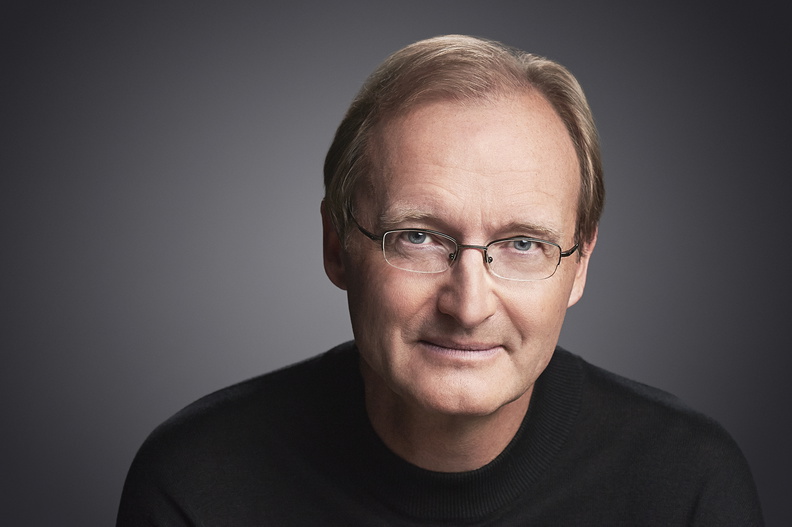
Andrew Holecek is an author, speaker, and humanitarian who offers seminars internationally on meditation, lucid dreaming, and the art of dying. His work has appeared in Psychology Today, Parabola, Lion’s Roar, Tricycle, Utne Reader, Buddhadharma, Light of Consciousness, and many other periodicals. Learn more at andrewholecek.com.
5 Neurosculpting Practices for Lasting Brain Change
Incorporating these five best neuroplasticity practices can open the doors to a more graceful, resilient, and lasting experience of change.

